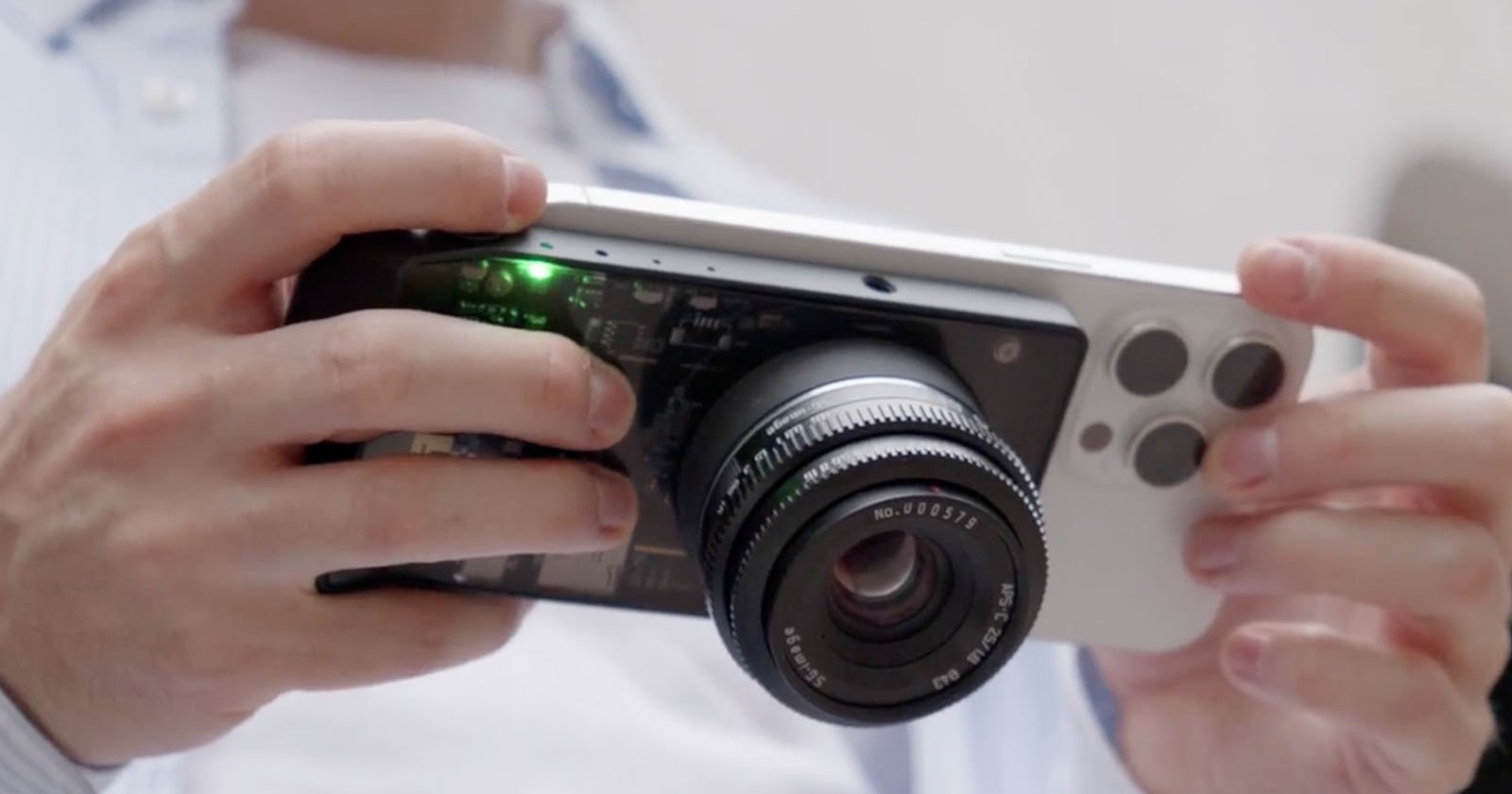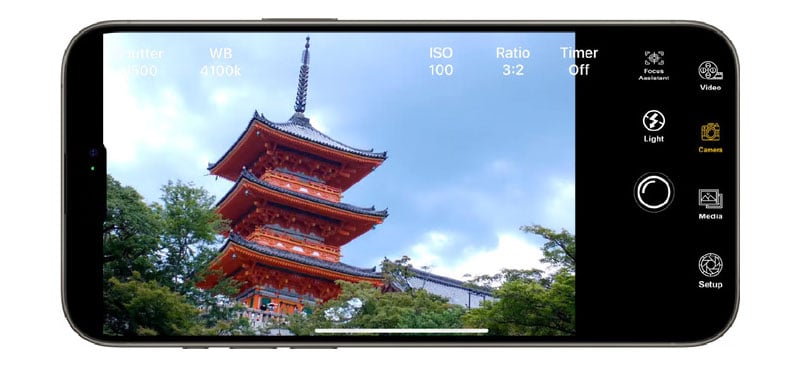
[ad_1]
![]()
One Micro Four Thirds camera and smartphone combo product is unusual, but two in as many weeks? It’s downright wild. A new product on Kickstarter, SwitchLens, promises to turn any smartphone into a pro-grade camera.
The Alice Camera is finally about to ship after three years in development. It sports a Micro Four Thirds sensor and relies heavily on an accompanying smartphone device for its full suite of features. As for the new SwitchLens, created by SneakiDesign, it also works alongside a smartphone and has a Micro Four Thirds camera system.
However, although it includes a Micro Four Thirds mount, the standard SwitchLens doesn’t actually have a Micro Four Thirds sensor. The base SwitchLens camera/grip features a 20-megapixel “large CMOS” sensor. The specific sensor is the Sony IMX283, which is 15.86 millimeters diagonally. On the other hand, a full Micro Four Thirds sensor measures 22.5 millimeters diagonally.
![]()
SwitchLens accepts any Micro Four Thirds lens, albeit with an additional crop factor due to the smaller image sensor. A typical Micro Four Thirds sensor has a two times crop factor, but the IMX283 sensor necessitates a 2.7 times crop factor. To put this into perspective, imagine an OM System 12-40mm f/2.8 lens offering a 24-80mm equivalent focal length on an OM-1 Mark II. On the SwitchLens, this lens would instead behave like a 32-108mm lens.
That said, for users who want an actual Micro Four Thirds sensor, a premium M43 CMOS add-on is available. The $99 upgrade swaps out the IMX283 Type 1 sensor for a 21.5-megapixel IMX472 Type 4/3 sensor.
![]()
This add-on joins other optional add-ons, like SwitchLens Micro Four Thirds lenses, including a series of compact primes and specialty lenses like a 12mm f/2.8 and a 7.5mm f/2.8 fisheye. These lenses range from $39 to $139.
Back to SwitchLens, the device itself is a grip and camera that the user attaches to their smartphone. The connected smartphone acts as the control unit and display. That said, the smartphone can communicate with SwitchLens wirelessly, so it doesn’t need to be physically attached to SwitchLens, enabling remote operation.

SwitchLens has a microSD card slot, which supports up to 1.5TB memory cards. It weighs 200 grams (seven ounces) with its rechargeable battery.
SwitchLens aims to deliver the portability and convenience of smartphone photography with the benefits of a bigger sensor and lenses. While smartphone camera tech has come an awful long way, and the most recent phones capture great images, there is no substitute for a larger sensor and the complex optical designs enabled by dedicated cameras.
SwitchLens provides links to numerous sample images on the Kickstarter page, alongside comparisons from a standard iPhone camera. PetaPixel has downloaded the available sample images, and they appear entirely legitimate, unlike some sample photos on certain Kickstarter campaigns.


Alongside capturing RAW and JPEG still photos, the device also records 4K video up to 60p. A 4K/30p sample video is available below.
Pricing and Availability
SwitchLens starts at $199 for the body only. The camera plus three and six-lens kits are also available for $346 and $649, respectively. SwitchLens is expected to start shipping in November. Complete backing options and details, including an outline of the risks associated with crowdfunding campaigns, are available on Kickstarter.
As for compatibility, SneakiDesign says, “The SwitchLens is compatible with iOS and Android smartphones. It is designed to attach to any MagSafe/Qi2 device and phone cases with the magnetic ring on the back. This will fit almost all current smartphones on the market.”
Disclaimer: Make sure you do your own research into any crowdfunding project you’re considering backing. While we aim to only share legitimate and trustworthy campaigns, there’s always a real chance that you can lose your money when backing any crowdfunded project.
[ad_2]